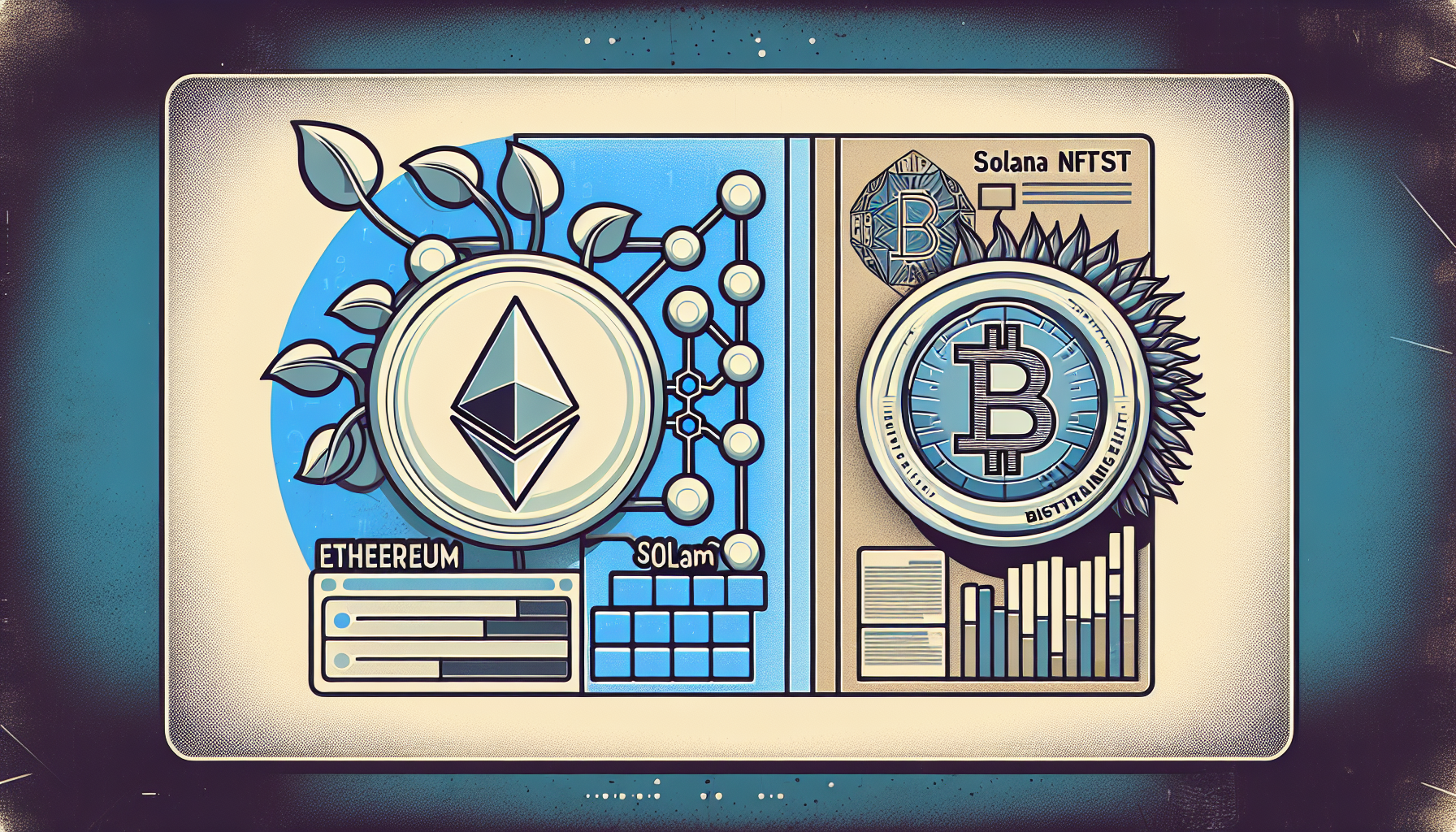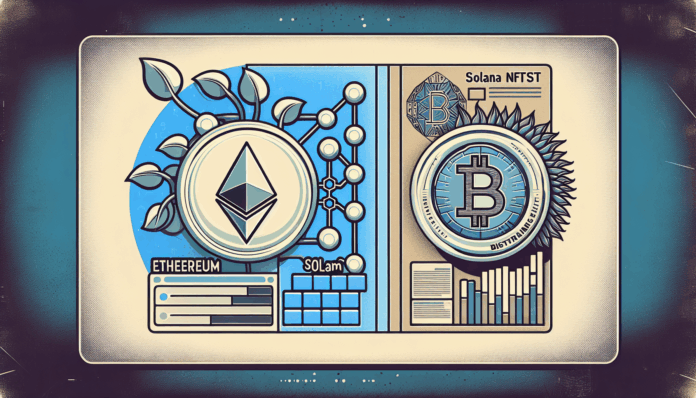Understanding the NFT Landscape
With over **5 million active NFT wallets**, the digital art market is flourishing. This raises the question: which blockchain is better for NFTs, Ethereum or Solana? Considering that **62%** of all NFTs are created on Ethereum, while Solana has been making leaps with its rapidly growing ecosystem, let’s dive deep into their differences.
Transaction Speed and Costs
Ethereum has been the go-to platform for NFTs, but its **high gas fees** can deter creators. In contrast, Solana boasts transaction speeds of around **65,000 transactions per second** at a fraction of the cost. This makes it more appealing for those who are just starting in the NFT space.
- Ethereum: High gas fees averaging around **$30 per transaction**.
- Solana: Costs less than **$0.01 per transaction**.
Marketplaces and Ecosystem
When considering where to buy or sell NFTs, the available marketplaces play a crucial role. Ethereum has established platforms like OpenSea and Rarible, boasting a diverse range of digital assets. On the other hand, Solana’s marketplaces like **Magic Eden** are quickly gaining traction, attracting more users every day.

- Ethereum Marketplaces: OpenSea, Rarible, Foundation
- Solana Marketplaces: Magic Eden, Solanart, DigitalEyes
Community and Developer Support
The strength of a blockchain often lies in its community. Ethereum has a long-established, vibrant community with numerous developers dedicated to advancing the platform. As of now, there are over **250,000 developers** working on Ethereum. Solana, while newer, has also attracted a sizable community with **over 1,200 projects** being developed.
- Ethereum Developers: Impressive figures signal longevity and support.
- Solana Developers: Rapid growth indicates rising popularity.
Future Prospects
Looking towards the future, both Ethereum and Solana have their unique advantages. Ethereum’s ongoing transition to **Ethereum 2.0** aims to reduce gas fees and improve transaction speeds. Meanwhile, Solana’s rising popularity among gamers with integrations in gaming NFTs suggests a bright future as well. For potential NFT investors, understanding these platforms’ trajectories is crucial.
In conclusion, Ethereum still holds a **significant lead** in the NFT market due to its established infrastructure. However, Solana presents an attractive alternative with faster transactions and lower costs. As the NFT landscape evolves, investors should weigh these factors carefully.
If you’re looking to **delve deeper into crypto and NFT trends**, consider exploring our related articles at hibt.com or check out our guides on how to securely store your cryptocurrencies.
Stay updated and make informed decisions! Download our latest guide on **NFT market trends** now!
Disclaimer: This article is for informational purposes only and does not constitute investment advice. Always consult with your local regulatory body before making any investment decisions.
Authored by: Dr. Jane Smith, a blockchain researcher with over **30 published papers** and expertise in major auditing projects in the cryptocurrency space.




